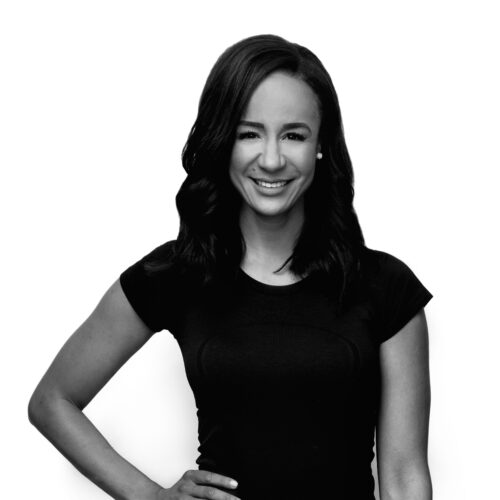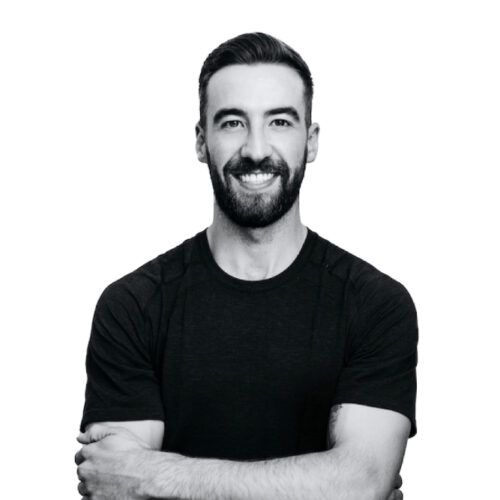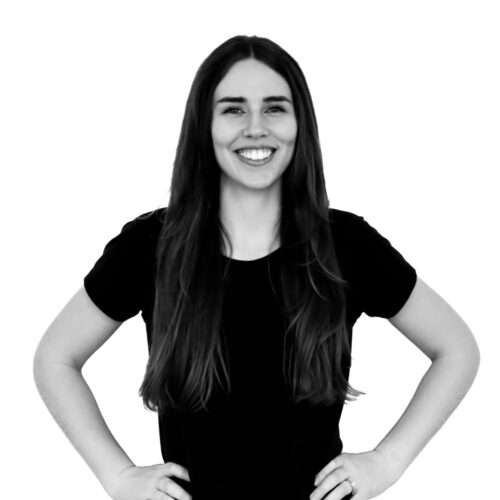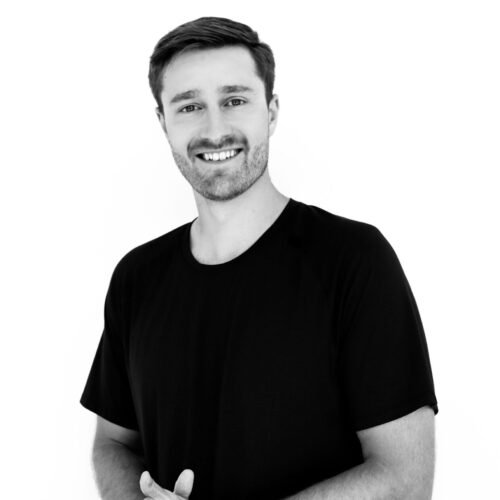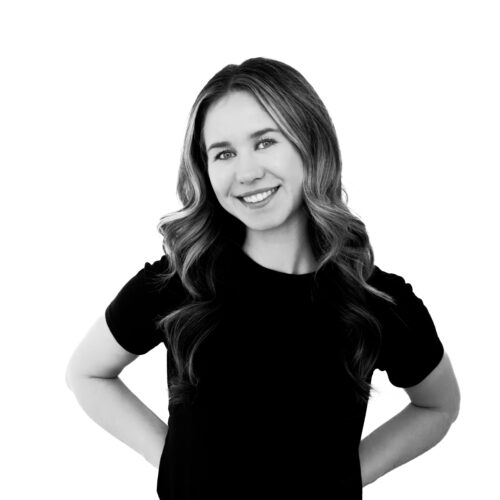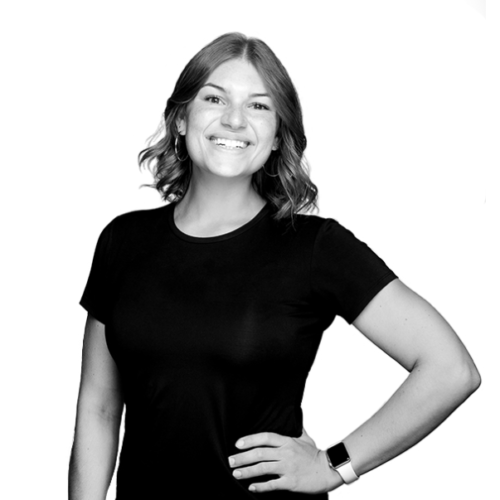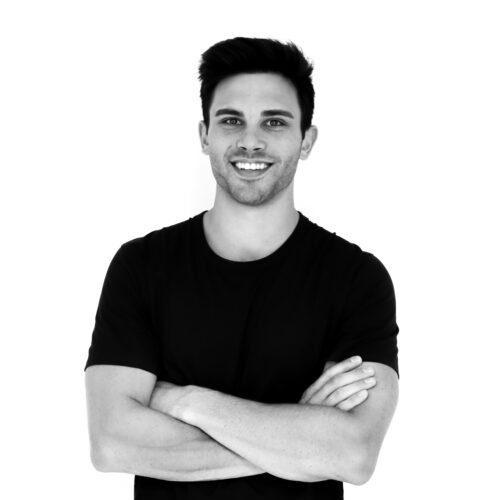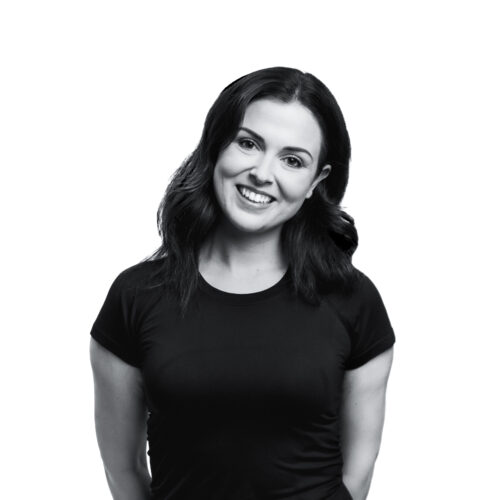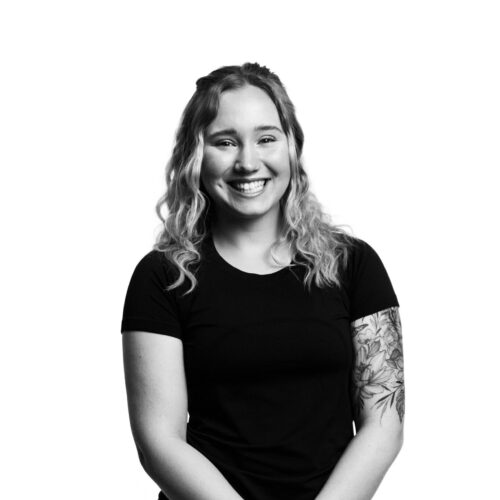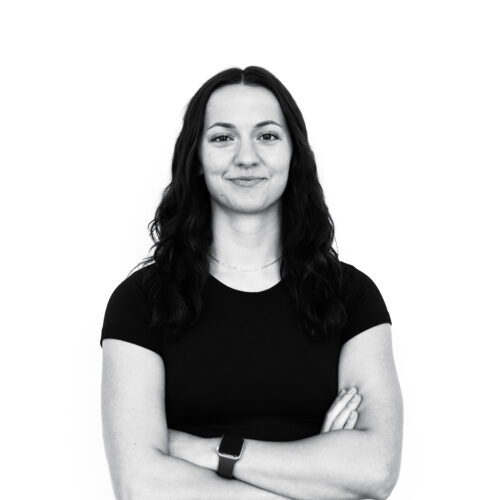IN MOVEMENT WE TRUST
An Edmonton-based Multi-Disciplinary facility for your body and your sport, to keep you moving.
#TOGETHERWEMOVE
Obsessive in results, creative in execution and tied by the same belief:
It takes a village.
Our Offerings
YOUR VENTURE BACK.
As a primary caregiver, a Chiropractor can assess, diagnose and treat your injury with a combination of methods including manual therapy, joint manipulation and adjustments, acupuncture/dry-needling, Graston, active release therapy (ART), and exercise prescription. The goal of chiropractic care is to return you to your optimal level of functioning and strength.
What is an adjustment? An Adjustment is a non-invasive procedure consisting of a precise directed movement to help relieve pain and discomfort, and restore range of motion.
Active Release and soft tissue treatment allows your caregiver to evaluate the texture, tightness and movement of muscles, fascia, tendons, ligaments and nerves. Abnormal tissues are treated by combining precisely directed tension with specific patient movements. ART® is a soft tissue system/movement based massage technique that treats problems with muscles, tendons, ligaments, fascia and nerves.
Graston Technique® (GT) is a unique form of instrument-assisted soft tissue mobilization that enables clinicians to effectively and efficiently address soft tissue lesions and fascial restrictions resulting in improved patient outcomes. GT uses specially designed stainless steel instruments with unique treatment edges and angles to deliver an effective means of manual therapy. The use of GT instruments, when combined with appropriate therapeutic exercise, leads to the restoration of pain-free movement and function. Read more about Graston Technique on our blog.
Your Chiropractor will work with you to develop a treatment plan that will include exercise rehabilitation home-care. The best way to get you better, is to keep you moving!
Movement truly is medicine, whether you are looking to walk your dog or run your first marathon. As a health care practitioner and manual therapist, a physiotherapist, will help get you there. With a strong emphasis on functional movement and improvements in functional strength, you will develop a treatment plan that consists of movement that works with you and your lifestyle.
A hands on, 100% one-on-one approach is essential to making this happen – through well-guided prescribed exercises along with manual therapy, you will be one step closer to your goals and living a pain free and healthy lifestyle.
In addition to exercise rehabilitation, our physiotherapists utilize a variety of tools to add to the complete care that you receive:
Mobilizations + Manipulations
Exercise Rehabilitation
Functional Range Conditioning (FRC)
IMS / Dry Needling
Taping
Your physiotherapist will create a research based plan curated to your specific needs to reduce pain, keep you doing the things you love, and help you feel your best!
Registered Massage Therapists (RMTs) are health care professionals who specialize in the manipulation of soft tissue to improve physical function and to assist with pain management. At Kinetic Living, our RMTs not only provide injury treatment and overall body maintenance, but also utilize abdominal massage, lymphatic drainage, cupping, and assisted stretch therapy within your treatment. Our Registered Massage Therapists work closely with you to create a personalized treatment plan that fits your needs and goals.
Injury treatment involves assessing and treating musculoskeletal injuries, often in collaboration with our other modality health care practitioners. Abdominal massage works to improve digestion and aid in the reduction of stress and tension within the body. Lymphatic drainage massage is a massage technique designed to help stimulate the lymphatic system and promote the flow of fluid throughout the body, which can help improve immune function and reduce swelling. Body maintenance includes techniques such as trigger point therapy, deep tissue massage, and myofascial release to prevent injuries and to enhance overall physical performance.
What is cupping? Cupping is a technique derived from Traditional Chinese Medicine that is used to alleviate pain, remove toxins from the muscles and tissue, move congested and stagnant blood, loosen muscles, and encourage new blood flow to the area. Cupping can help with tight fascia and scar tissue breakdown. You can read more about cupping on our blog.
Assisted stretch therapy is a stretching technique utilized to increase your range of motion and flexibility. Assisted Stretch Therapy increases the length of the muscle, in turn increasing efficiency and range of motion of the muscles.
Our Registered Massage Therapists offer a range of Massage Therapy Treatment lengths including; 30 minute Spotlight Session, 60 minute Overhaul Session, 90 minute Workover Session, and 120 minute Extended Workover Session.
Osteopathy is a wholistic approach that aims to restore the body’s natural balance by improving joint mobility, muscular strength, and enhancing circulation. Our Osteopathy practitioners use a hands-on approach to identify and treat musculoskeletal issues, which can include conditions such as back pain, neck pain, and joint stiffness. Osteopathic treatment involves hands-on techniques such as manipulation, mobilization, stretching and massage to enhance circulation, reduce pain, and improve range of motion, among other benefits.
In addition to providing treatment, our Manual Osteopathic Therapist also places a strong emphasis on preventative care. We will work with you to identify factors that may contribute to musculoskeletal issues and develop strategies to mitigate these factors. Through education on proper body mechanics, ergonomics, and stress management techniques, we can help maintain overall health and wellbeing long-term.
Proper nutrition is the fuel that powers every movement, from the simplest daily activities to the most intense workouts. While movement and exercise strengthen the body and mind, it’s nutrition that ensures the body has the necessary building blocks for recovery, energy, and long-term health. Without a well-rounded nutrition plan, even the most effective training routines can hit a plateau, leaving you feeling fatigued or unable to fully achieve your goals.
A Registered Dietitian focuses on creating a balanced nutrition plan that works in tandem with your movement and recovery efforts, supporting both physical performance and overall health. Whether you’re recovering from an injury, looking to improve energy levels, establish consistent routines, manage hunger, stay properly hydrated, manage a chronic condition, or simply feel better in your body, nutrition plays a critical role in your success.
By aligning nutrition with movement and exercise, the body receives the fuel it needs to thrive. This holistic approach helps improve strength, reduce the risk of injury, enhance recovery, and maintain a healthy, active lifestyle — no matter what your goals may be. Whether you’re training for a race, managing stress, or simply aiming for better health, the combination of mindful movement and proper nutrition leads to lasting results.
IMS, also known as dry needling, is a hands-on treatment where a healthcare practitioner stimulates trigger points in the affected muscle to elicit a ‘twitch’ response. This releases the muscle from its strained or contracted state, providing immediate relief from pain, tension, and improving range of motion.
IMS is effective to treat:
Low back Pain
Calf tightness
Hamstring strain
Hip tightness
Runners Knee
Patellofemoral Pain Syndrome
Tennis or Golfers Elbow
Rotator Cuff/ Shoulder Strain
Neck Pain and Tightness
For more information about IMS, check out our blog.
As a Registered Acupuncturist at Kinetic Living, the primary role is to provide alternative healthcare treatments to patients seeking relief from various ailments. Registered Acupuncturists are trained health care professionals who specialize in the practice of acupuncture, a Traditional Chinese Medicine practice that is used to balance the body’s energy, improve overall health, and manage chronic pain. Their expertise also extends to additional medical modalities, such as cupping and moxibustion.
Acupuncture has numerous benefits for the body, including reducing stress levels, pain relief, improving sleep, and increasing energy levels. Acupuncture therapy is also used to treat various medical conditions such as chronic pain, digestive disorders, respiratory illnesses, menstrual issues, and fertility problems.
Cupping is another popular Traditional Chinese Medicine practice that involves placing heated cups on the skin to create suction. Cupping can help with tight fascia and scar tissue breakdown. Read all about cupping on our blog.
We strive to cultivate community and extend your treatment at Kinetic Living beyond the treatment room.
Throughout the year we participate and host various events and educational workshops to keep you moving; including our annual Kinetic Community Sweat Beach Volleyball tournament, and Yoga Under the Stars. We truly believe that it takes a village to reach your goals; and we’re here with you every step of the way.
Interested in having the Kinetic Team in the workplace? Whether it’s workplace ergonomics, a stretch and mobility session, or something else you have in mind, we’re here to keep the balance in your workplace. Feel free to contact us!
Stay up-to-date on our events throughout the year by subscribing to our newsletter or checking out our socials.
#TOGETHERWEMOVE
The team was chosen
for their meticulous
attention to detail.
Want to be a member of our team?
Drop us a line if you have a deep-seated passion, rooted in your community, to provide one-on-one care, and would like the opportunity to collaborate with a team of like-minded health care professionals alike!
What We Treat
We Treat it All
Our guests come and see us for the experience, the knowledge, and the highest level of care.
Whether a 30 minute spotlight session or a 60 minute overhaul, your body is our focus.
-
Shoulder Injuries
Shoulder injuries are an incredibly common ailment and have a variety of causes. You may experience shoulder pain from falling, overworking, repetitive motion stress, or normal wear and tear.
-
Tennis Elbow
Lateral Epicondylitis, better known as tennis elbow, is a fairly painful condition in which the tendons of your elbow are overloaded due to overuse. Despite its athletic name, tennis elbow is a common condition in other professions in where people make repetitive motions of the arm and wrist, such as being at a computer for a long period or using tools such as a carpenter or mechanic.
-
Ankle Sprains
An ankle sprain refers to any injury obtained by twisting, rolling, or awkwardly turning your ankle. Bad ankle sprains can stretch and tear the ligaments that hold your ankle bone together to prevent an excessive range of motion.
-
Scoliosis
Scoliosis is defined by excessive curvature of the spine. It most often occurs during the growth spurt right before puberty. Scoliosis can be caused by serious conditions such as muscular dystrophy and cerebral palsy, but the cause of most scoliosis cases is considered idiopathic or unknown.
-
Supportive and Corrective Kinesiotaping
Kinesiotaping is a rehabilitation method used by chiropractors to support joints and muscles without hampering your body’s range of motion. Kinesiotaping also provides extended soft tissue manipulation since the tape is wearable for days and is comfortable for the patient.
-
Low Back Injuries
A low back injury refers to any pain associated with your muscles, ligaments, or spine in the lower back. Common lower back injuries include muscle strain, ligament strain, arthritis, pinched nerves, osteoporosis, bulging disks, and ruptured / herniated disks.
-
Sciatica / Numbness and Tingling
The sciatic nerve is a large nerve that runs from your lower back via your buttock down the back of each of your legs. Sciatica occurs when an injury puts pressure on the sciatic nerve and results in moderate to severe pain in the lower back, hips, buttocks, or leg.
-
Postural Issues
Postural issues encompass a range of habits that put your spine in awkward and unnatural positions, causing stress on the spine, joints, and muscles. Common postural issues include slouching when seated, rounded shoulders, one-legged leaning, forward head carriage, bent knees, arching of the lower back, and most commonly known, ‘tech neck’.
-
TMJ / Jaw Issues
Temporomandibular joint (TMJ) dysfunction can cause pain in the jaw joint as well as in the muscles that control your jaw movement. Common causes of pain in the jaw include grinding of the teeth, misalignment of the teeth or jaw, clenching your teeth, motor vehicle accidents, poor posture, stress, gum chewing, and arthritis.
-
Wellness / Supportive Care
Wellness and supportive care are an important part of self-care to maintain optimal body functioning, alignment, and health; essentially it allows you to prevent the injury before it happens. Supportive care consists of a regular schedule of manual muscle therapy and adjustments to keep your body in peak condition regardless of any symptoms present.
-
Wrist Sprain
A sprained wrist is a very common injury in which the ligaments and tendons of the wrist are stretched too far. A sprained wrist can vary from a slight stretch to minor tears in the tendon to a full tear of the ligament.
-
Neck Pain
Neck pain is a common concern for many people and has a variety of causes. You may experience neck pain after a fall or motor vehicle accident, from poor posture, arthritis, nerve compression, whiplash, worn joints, muscle strains, bone spurs, awkward sleep, and certain diseases such as meningitis.
-
Headaches and Migraines
A migraine is defined as a severe throbbing or pulsing on (usually) one side of the head, and can be accompanied by nausea, an ‘aura’, sensitivity to light and sound, and vomiting. A headache is characterized by a less severe pain in the head, neck, or face; often caused my tight muscles in the neck and mid-back.
-
IT Band Syndrome
IT band syndrome is a lateral knee injury in which the IT band becomes inflamed, irritated, or tight. It can be caused by overuse and repetitive flexion and extension of the knee and poor walking and running mechanics. Pain occurs when the tightness of the band causes friction on the outside of the knee.
-
Hip Pain
Your hip may hurt for a number of reasons, some of which include arthritis, impingement, bursitis, tendonitis, muscle strain, a labral tear, osteonecrosis, and wear and tear of the joint. Depending on the cause, you may also feel pain in the thigh, grown, buttocks, and either inside or outside the hip joint.
-
TPI + Golf Movement
The golf swing is a complex movement pattern that comes in many variations, some more efficient than others. Here at Kinetic, Dr. Isaac is certified as a Titleist Performance Institute (TPI) medical provider (level 2) and specializes in golf specific injuries, rehabilitation, and performance.
-
Motor Vehicle Accidents
When you’re involved in a car accident, you may experience minor or severe injuries. The most common injuries obtained from a motor vehicle accident include neck injuries such as whiplash, back injuries, spinal cord injuries, shoulder injuries, broken bones, strains and sprains, and psychological trauma.
-
Plantar Fasciitis
Plantar fasciitis is a painful condition of the foot in which the plantar fascia – the thick band of tissue that runs under the bottom of your foot connecting the heel bone to the toes – develops micro-tears and becomes inflamed after repeated overuse.
-
Pregnancy
As your pregnancy progresses, your body will change drastically to support the life growing inside of you. As a result, you may experience a variety of aches and pains on your skeleton and supporting tissues. Common pains during pregnancy include back pain, sciatica, pubic pain, carpal tunnel, rib pain, round-ligament pain, leg cramps, and more.
FAQs
HOW DOES KINETIC LIVING DIFFER FROM OTHER FACILITIES?
At Kinetic Living, what sets us apart is our truly multi-disciplinary approach to health and wellness. We bring together a team of experts from various fields, each with their own unique specialty and areas of interest. This allows us to collaborate and co-treat, providing a comprehensive, holistic approach to your recovery.
Our treatment goes beyond just what happens in the treatment room. We take the time to understand your goals and needs, and then create a personalized plan to get you moving and feeling better, while also equipping you with the tools to maintain long-term health.
We are all about community, collaboration, and providing a one-on-one tailored approach to treatment.
WHAT KIND OF TRAINING DO THE PRACTITIONERS AT KINETIC LIVING HAVE?
All of our practitioners are licensed and registered via their respective colleges and have surpassed the requirements to practice in the province of Alberta.
IS TREATMENT PAINFUL?
Your practitioner will assess what tolerance you have to pressure. While it may be slightly uncomfortable at first, by providing feedback, your therapist will ensure to find a treatment style that is best suited to you. Remember, this your treatment, and it is meant to be tailored to your goals and needs!
WILL KINETIC LIVING DIRECT BILL MY INSURANCE?
Yes! We offer direct billing to most insurance companies.
Please note, we will submit your session electronically on your behalf, however, should your insurance not cover the entire treatment visit or prompt a declined / unauthorized response when submitted, you will be required to pay for the visit.
If you have any questions about insurance coverage or direct billing, our Office Manager and guest relations team are here to assist you!
WHAT FORMS OF PAYMENT ARE ACCEPTED?
We accept Visa, MasterCard, AMEX and Debit. We do our part for the environment and do our best to be paper-free, so we will email you your receipts, unless otherwise requested!
HOW CAN KINETIC LIVING HELP IF I DON'T HAVE PAIN OR OTHER SYMPTOMS?
CAN KINETIC LIVING HELP AFTER A MOTOR VEHICLE ACCIDENT?
Yes, please give our team a call to set up your treatment as there are a few additional steps and questions necessary prior to your initial visit. A call to your insurance provider to open a claim, and making a police report will be the first steps in getting you treatment quickly.
WHAT CAN I EXPECT ON MY FIRST VISIT?
Prior to your visit, we will send you an intake form so that we have the most information to make an assessment. You will meet with your practitioner, and after an evaluation of how you move (or aren’t moving!) together, you will come up with a treatment plan. Then, we put in the work to get you where you need to be.
We recommend that you wear or bring comfortable and flexible clothing to your session. Also, bring your Alberta Health Care number along with any additional insurance or benefits coverage that you may have.
WHERE CAN I PARK?
Free parking is available to guests of our building in front of The Garneau building, keeping in mind that no walk-offs are allowed. Alternatively, there is metered City of Edmonton street parking available on 109th Street, 84th Avenue, or 85th Avenue.
STAY CONNECTED
Check us out on Instagram to follow us in our daily pursuits of movement – @Kinetic.Living
Subscribe to our newsletter to stay in-the-know.
Your privacy is important to us, so we never share your information.



